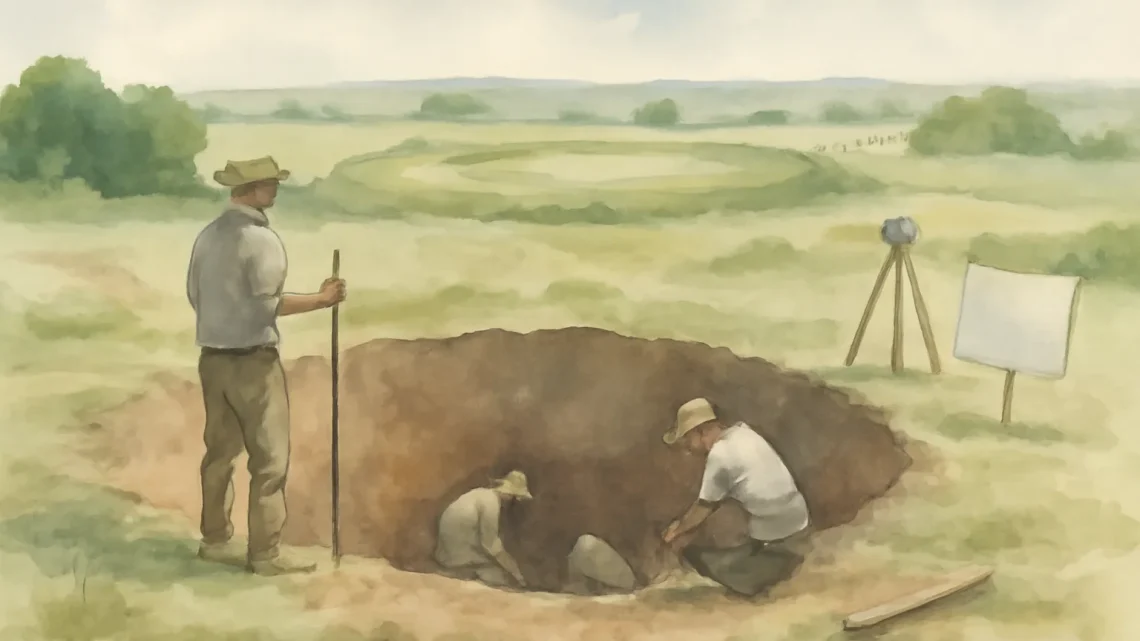
New Insights into Stonehenge’s Neolithic Pit Circle
November 24, 2025Archaeologists reveal details of vast prehistoric pits near Durrington Walls
Recent research led by archaeologists from the University of Bradford has provided new information about a large ring of Neolithic pits located near Durrington Walls, close to Stonehenge. First identified in 2020, these pits form a circle over two kilometres wide, enclosing an area exceeding three square kilometres around the sites of Durrington Walls and Woodhenge.
Largest known prehistoric structure in Britain
Each pit measures up to 10 metres in diameter and five metres in depth, making this the largest prehistoric structure known in Britain. The research team has moved beyond initial mapping to investigate the origins and environmental context of these features.
Methods used in the research
- Borehole coring
- Sediment analysis
- Geochemistry
- Optically Stimulated Luminescence (OSL) dating
- Environmental DNA (sedaDNA) analysis
These techniques have helped reconstruct the history and environment of the pits, confirming that they are human-made and date to the Late Neolithic period, around the time when Durrington Walls was constructed.
Findings on pit characteristics and environment
Most pits reach depths between 4.5 and 6.9 metres. Layers of fine clay and silt within the pits suggest they were gradually filled in over time. Analysis of sedaDNA and soil chemistry has identified the types of plants that grew nearby, providing insight into how the pits related to their surrounding landscape.
Interpretations and significance
Professor Vince Gaffney, lead archaeologist from the University of Bradford, stated that the circle of shafts surrounding Durrington Walls is unprecedented in the UK. The pits were not merely dug and left; instead, they formed part of a structured and monumental landscape that reflects the complexity of Neolithic society.
The research shifts the discussion from viewing these features as “big mysterious holes” to exploring their purpose, chronology, and environmental setting. It is suggested that the pits may have marked a sacred boundary connected to ceremonial activities at Durrington Walls, possibly reflecting cosmological beliefs that influenced the Stonehenge landscape.
Collaborative project details
This research is part of the Stonehenge Hidden Landscapes Project, an international collaboration led by the University of Birmingham and the Ludwig Boltzmann Institute for Archaeological Prospection and Virtual Archaeology. Other partners include the University of Bradford, University of St Andrews, University of Warwick, University of Wales Trinity Saint David, and Ghent University. The project operates under the auspices of the National Trust and English Heritage.
For further information, visit the Stonehenge Hidden Landscapes Project.
































